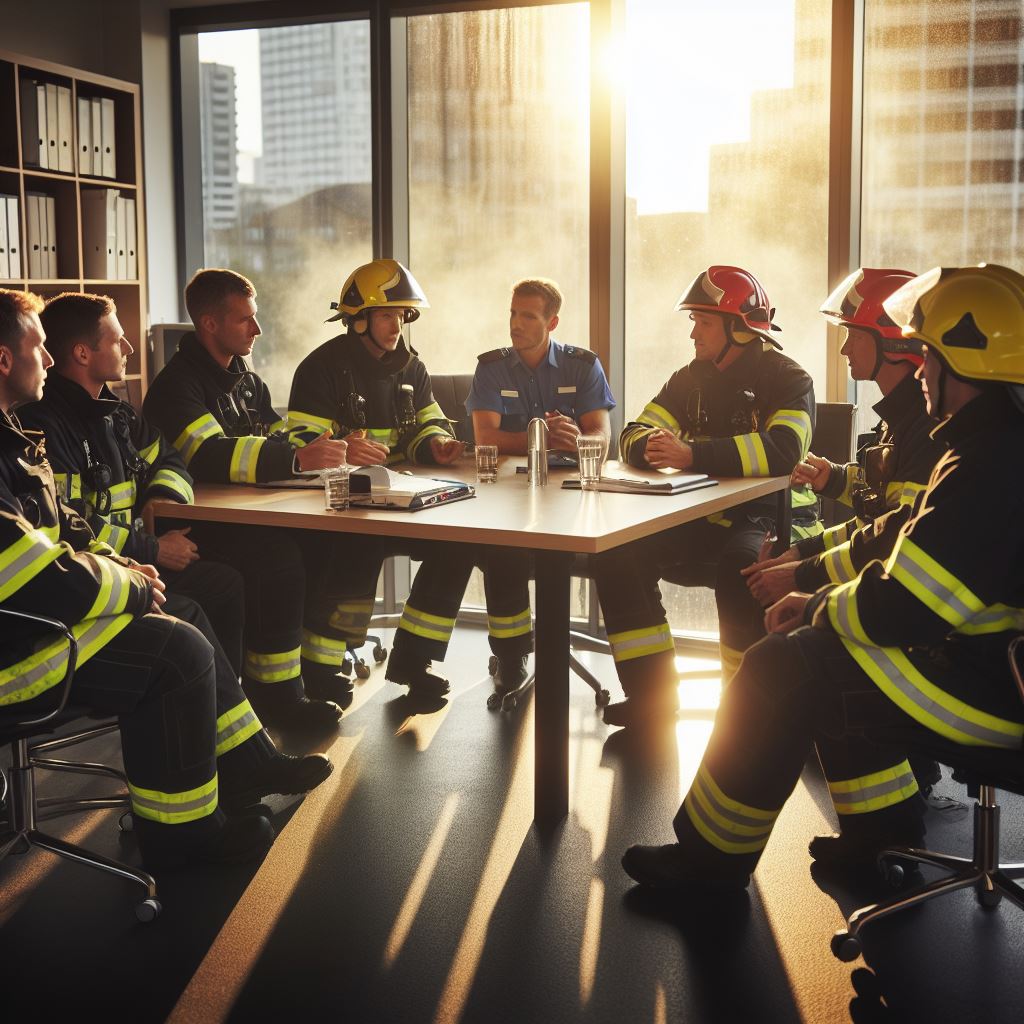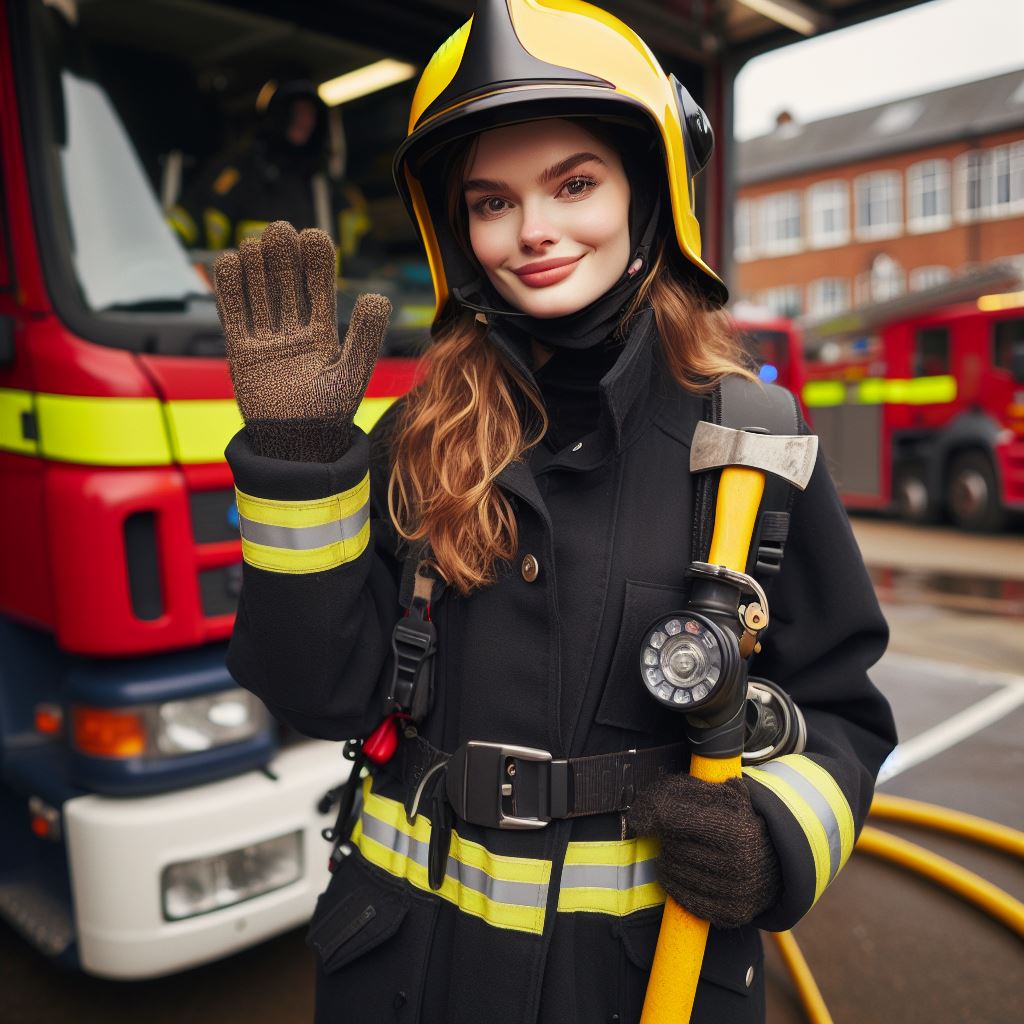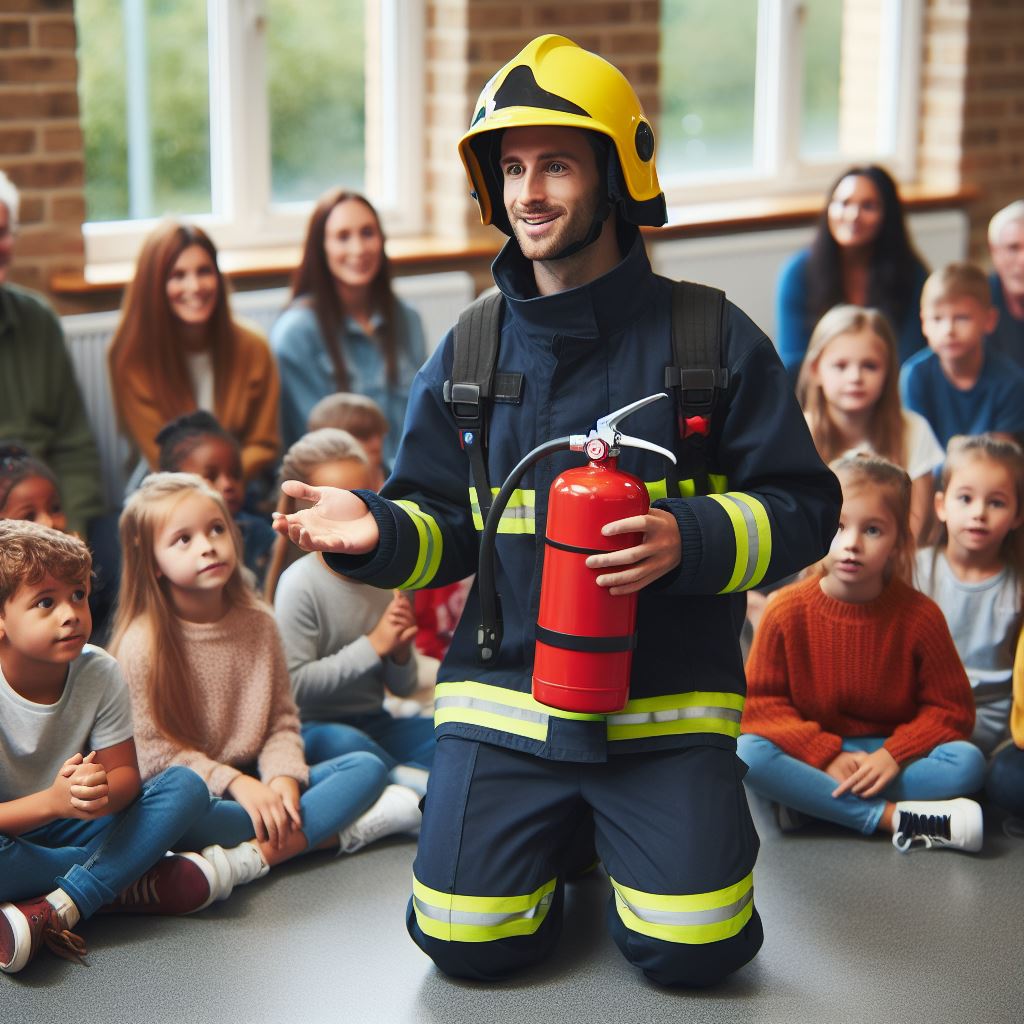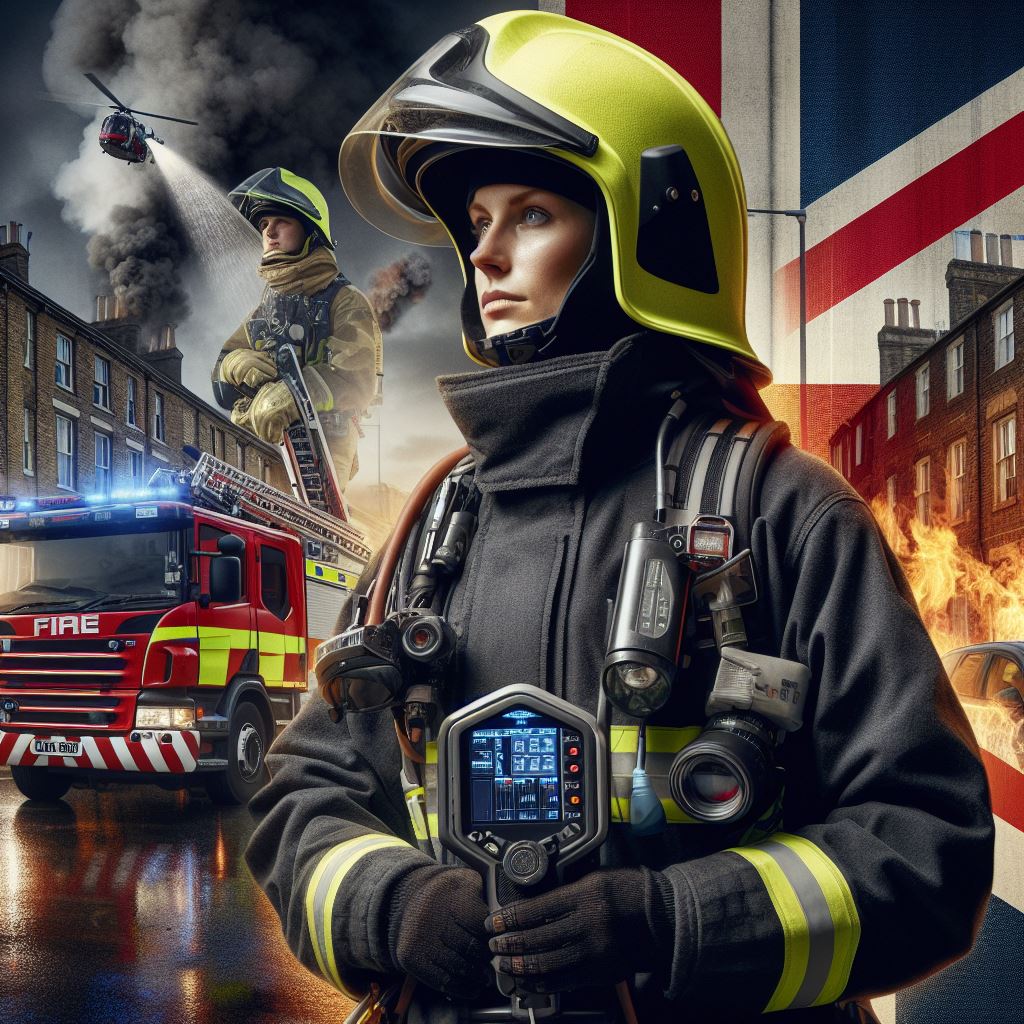Introduction
Aspiring firefighters and the general public often find themselves confused about the hierarchy and roles within the UK’s Fire Service.
This section aims to shed light on the subject for better comprehension and appreciation.
The Fire Service ranks in the UK are organized in a hierarchical structure, with each rank corresponding to specific responsibilities and duties.
Firefighters progress through various ranks: firefighter, crew manager, watch manager, station manager, group manager, area manager, deputy assistant chief, assistant chief, and chief fire officer.
Understanding the significance of these ranks is crucial, not only for those considering a career in the Fire Service but also for the general public.
By familiarizing themselves with the ranks, individuals can better appreciate the expertise and experience possessed by firefighters and the leadership hierarchy within the organization.
Career progression within the Fire Service relies heavily on the understanding of ranks.
As firefighters gain experience and qualifications, they can advance through the ranks, taking on more responsibility and leadership roles.
Knowledge of the ranks is essential for aspiring firefighters who aim to set clear goals and develop the necessary skills to reach higher positions.
Public awareness of the Fire Service ranks allows individuals to comprehend the chain of command during emergencies.
Understanding the roles of different ranks facilitates effective communication and cooperation with firefighters, enhancing public safety efforts.
Generally, comprehending the UK’s Fire Service ranks is vital for both career development and public awareness.
Understanding the firefighter’s profession and the hierarchy promotes safety and professional growth in emergencies.
Read: Firefighting Gear: What UK Firefighters Wear
Fire Service Ranks in the UK
In the UK’s Fire Service, there are different ranks and positions that firefighters can aspire to achieve.
Personalized UK Career Consulting
Receive tailored career guidance designed just for you. Get actionable steps and expert support to boost your career in 1-3 days. Take control of your career now.
Get StartedEntry-level ranks
Firefighter
- The first rank is the firefighter.
- This is the starting point for anyone joining the Fire Service.
- Firefighters undergo extensive training to handle emergencies and perform various firefighting tasks.
Junior Firefighter
- Another entry-level rank is the junior firefighter.
- Junior firefighters are usually younger individuals who join the Fire Service as a way to gain experience and learn about firefighting techniques.
- They work under the guidance of experienced firefighters.
Non-command ranks
Moving up from the entry-level ranks, firefighters can advance to non-command ranks.
These positions involve more responsibility and leadership within the department.
Crew Manager
- Firstly, there is the Crew Manager.
- Crew Managers are responsible for leading a team of firefighters during emergencies.
- They ensure that their crew operates efficiently and effectively during firefighting operations.
Watch Manager
- A step above the Crew Manager is the Watch Manager.
- Watch Managers oversee multiple crews during emergencies.
- They coordinate resources and make critical decisions to ensure effective firefighting operations.
Station Manager
- Station Managers are responsible for managing an entire fire station.
- They oversee the activities and personnel at the station, ensuring that all operations run smoothly.
Group Manager
- At the highest level of the non-command ranks, there is the Group Manager.
- Group Managers have broader responsibilities, overseeing multiple fire stations and their respective Station Managers.
- They also play a crucial role in developing and implementing departmental policies.
Command ranks
- The command ranks represent the highest positions within the Fire Service.
- These individuals are responsible for leading the entire department and making strategic decisions.
Area Manager
- The first command rank is the Area Manager.
- Area Managers are responsible for a specific geographic area within the fire service.
- They oversee multiple fire stations and ensure that operations are coordinated efficiently.
Assistant Chief Fire Officer
- Assisting the Area Managers is the Assistant Chief Fire Officer.
- They support the top management by providing expert advice and assistance in strategic planning and decision-making.
Deputy Chief Fire Officer
- The Deputy Chief Fire Officer is the second-in-command of the entire Fire Service.
- They assist the Chief Fire Officer in managing the day-to-day operations of the department.
Chief Fire Officer
- Finally, at the top of the hierarchy, there is the Chief Fire Officer.
- This position carries ultimate responsibility for the Fire Service.
- The Chief Fire Officer sets the overall strategy, represents the department at a national level, and ensures the highest standards of firefighting and public safety.
In short, the UK’s Fire Service ranks provide a clear career progression for firefighters, allowing them to take on more responsibility and leadership roles as they gain experience and expertise.
From entry-level positions to non-command and command ranks, each role contributes to the effective operation and management of the Fire Service.
Read: Firefighter Fitness: Staying Fit for Duty in the UK

Gain More Insights: Work-Life Balance in Local Govt Jobs UK
Responsibilities and roles at each rank
Entry-level ranks
Duties and responsibilities of firefighters and junior firefighters
- Responding to emergency calls and providing firefighting and rescue services.
- Operating and maintaining firefighting equipment and vehicles.
- Conducting fire safety inspections and promoting fire prevention education in the community.
- Participating in training programs and drills to enhance skills and knowledge.
- Working closely with other emergency services to ensure effective coordination during incidents.
Non-command ranks
Roles and responsibilities of crew managers, watch managers, station managers, and group managers
Crew Managers
- Supervising a team of firefighters and ensuring their operational readiness.
- Assisting with the planning and implementation of firefighting operations.
- Acting as a liaison between the firefighters and higher-ranking officers.
Watch Managers
- Managing and coordinating firefighting operations within a specific geographic area or time period.
- Assessing risks and developing strategies to minimize fire hazards in their designated area.
- Providing guidance and support to firefighters during complex incidents.
Station Managers
- Overseeing the daily operations of a fire station, including personnel management and resource allocation.
- Ensuring compliance with safety regulations and maintaining equipment and apparatus.
- Representing the fire service in meetings with local authorities and community organizations.
Group Managers
- Managing multiple fire stations and coordinating resources across a larger geographical area.
- Developing and implementing strategic plans to enhance emergency response capabilities.
- Providing leadership and guidance to station managers and other subordinate officers.
Command ranks
Duties and responsibilities of area managers, assistant chief fire officers, deputy chief fire officers, and chief fire officers
Area Managers
- Managing all fire service operations within a defined geographical area.
- Developing and implementing policies and procedures to ensure effective emergency response.
- Liaising with external organizations and stakeholders to enhance collaboration and coordination.
Assistant Chief Fire Officers
- Assisting the Chief Fire Officer in strategic planning and decision-making.
- Overseeing major incidents and providing senior-level command and control.
- Representing the fire service at a regional or national level.
Deputy Chief Fire Officers
- Assuming responsibilities of the Chief Fire Officer in their absence.
- Leading the development and implementation of operational policies and procedures.
- Collaborating with external agencies and government bodies on fire safety initiatives.
Chief Fire Officers
- Providing overall leadership and strategic direction to the fire service.
- Ensuring the efficient allocation of resources and effective management of personnel.
- Engaging with the public, government officials, and media to raise awareness of fire safety issues.
In summary, Entry-level ranks, like firefighters and junior firefighters, respond to emergencies and conduct fire prevention activities within the UK’s Fire Service.
Non-command ranks—crew managers, watch managers, station managers, and group managers—oversee operations, manage resources, and guide subordinate officers.
Area managers, assistant chief fire officers, deputy chief fire officers, and chief fire officers manage larger areas, develop policies, and provide leadership within the Fire Service.
Read: The History of Firefighting in the United Kingdom
Promotions and career progression within the UK’s Fire Service ranks
Qualifications and criteria for promotions
- Obtaining higher education qualifications in fire science or related fields.
- Accruing relevant experience and demonstrating competence in current rank responsibilities.
- Passing assessment centers that evaluate leadership, problem-solving, and decision-making skills.
- Showcasing a commitment to continuous professional development through training and certifications.
- Evidence of effective communication, teamwork, and the ability to build positive relationships.
Training and development opportunities for career advancement
- Specialist training in areas such as hazardous materials handling, rescue operations, or incident command.
- Leadership programs to enhance skills in decision-making, strategic planning, and personnel management.
- Opportunities to attend national and international conferences to learn from industry experts and share best practices.
- Mentorship programs connecting aspiring leaders with experienced officers for guidance and support.
- Access to online learning platforms and resources to stay updated with the latest advancements in firefighting techniques.
Advantages and challenges associated with moving up the ranks
Advantages
- Increased responsibility and the opportunity to make a greater impact in safeguarding lives and property.
- Better salary and benefits packages, reflecting the higher rank and level of expertise.
- Recognition and respect from peers, subordinates, and the community for professional achievements.
- Access to specialized units and resources, allowing exposure to diverse firefighting scenarios.
- Greater opportunity for professional networking and collaboration with other emergency services.
Challenges
- Higher rank positions come with increased stress, as leaders are responsible for critical decision-making.
- Managing a larger team and ensuring their well-being, performance, and career development.
- Adapting to administrative tasks and paperwork, taking away from operational firefighting activities.
- Balancing work-life commitments due to the demanding nature of the job and potential for long shifts.
- Fulfilling expectations of superiors, stakeholders, and the public, while maintaining high standards.
Overall, the UK’s Fire Service offers various avenues for career progression.
Qualifications, experience, demonstration of skills, and commitment to professional development play crucial roles in promotions.
Training programs, conferences, mentorship, and online resources aid in continuous development.
Despite challenges, advancement offers greater responsibility, improved benefits, recognition, and access to specialized units, shaping firefighters into effective leaders.
Your Dream Job Starts with a Perfect CV
Get a tailored CV and cover letter that captures your unique strengths and stands out in your industry. Let us help you make an unforgettable first impression.
Get StartedRead: UK Firefighter Training: What Does It Take?
Learn More: Role of Local Councils in UK Political Careers
Learn More: UK Gov Officers: Skills and Qualifications
Conclusion
It is crucial to understand the various ranks in the UK’s Fire Service.
Recapping the ranks, we have the Station Manager, Watch Manager, Crew Manager, and Firefighter.
Each rank holds distinct responsibilities, ensuring efficient response and safety during fire incidents.
Understanding these ranks allows us to appreciate the diverse roles and challenges faced by firefighters.
By recognizing their expertise and authority, we can better support and respect their crucial work.
Additionally, comprehending the hierarchy within the Fire Service promotes effective teamwork and communication.
It allows firefighters to work cohesively, understanding their respective roles and responsibilities.
For a better understanding of the topic, it is encouraged to explore the history and training processes of each rank.
Further research will shed light on the dedication and sacrifices made by firefighters to ensure public safety.
Ultimately, understanding the UK’s Fire Service ranks is both informative and essential in appreciating firefighters’ invaluable contributions to society.
[E-Book for Sale]
500 Cutting-Edge Tech Startup Ideas for 2024 & 2025: Innovate, Create, Dominate
$19.99 • 500 Tech Startup Ideas • 62 pages
You will get inspired with 500 innovative tech startup ideas for 2024 and 2025, complete with concise descriptions to help you kickstart your entrepreneurial journey in AI, Blockchain, IoT, Fintech, and AR/VR.




